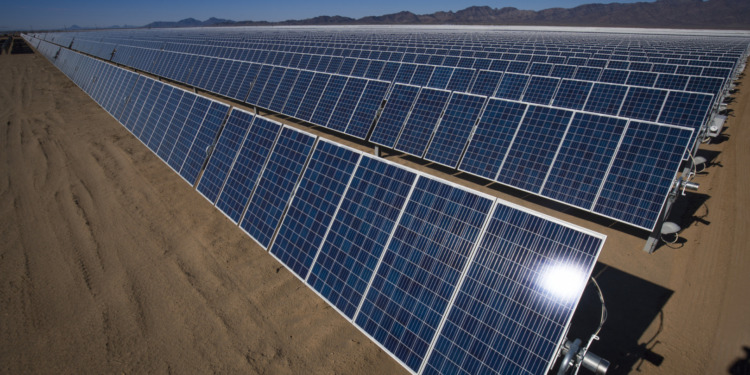Last Monday, the Biden Administration announced a temporary two-year pause on imposing new tariffs on solar imports with the goal of reviving the industry that has been suffering as a consequence of heavy tariffs.
More recently, American solar installers report that many of their projects have been stalled as a result of an ongoing investigation by the U.S. Department of Commerce into trade violations by Chinese solar manufacturers who are accused of attempting to get around the present tariffs by moving their production to other countries in Southeast Asia and exporting to the U.S. from there, and not from China directly.
The decision to pause new solar tariffs was made following complaints by American solar importers, alongside officials advocating for the solar energy transition, that the new tariffs the investigation could result in would cause material shortages, threatening the country’s clean energy transition.
The investigation: Why the American solar industry needs reviving
In March, the Commerce Department accepted a petition of investigation from Auxin Solar, a small, California-based solar panel producer, claiming several solar panel manufacturers based in Southeast Asia have been using other companies as a front to evade U.S. tariffs put in place for Chinese companies — tariffs which were imposed to encourage American manufacturing.
China has now come to dominate the global solar manufacturing market in part by giving factories subsidies so they can produce their products and sell them at significantly lower costs.
The low costs resulted in American solar companies buying from these cheaper products made in China, negatively affecting domestic production. As a result, in 2011 the US imposed tariffs on Chinese products to counteract the subsidies and unfairly low-priced products, as well as to even out the competition.
Since then, China has been accused of setting up new solar panel manufacturing plants in Southeast Asia and exporting products to the US in an attempt to evade these tariffs, which is what the Department of Commerce is now investigating.
Investigators are currently looking at manufacturers in Malaysia, Thailand, Vietnam and Cambodia in particular as part of these Chinese fronts.
As a result of months or even years of Chinese companies breaking U.S. trade law, American solar companies have been unable to compete, leaving the industry in the U.S. paralyzed and on the downhill.
In 2020, 89% of the solar modules used in the United States were imported, with Southeast Asian countries accounting for the bulk of the shipments — a big reliance on these exports now plaguing the future of solar energy.
Many are claiming that this investigation, although necessary for upholding American law, is potentially dangerous to the solar industry because of this dependency on low-cost products from China. Already, several solar energy companies have noted they are scrambling for new manufacturers as the investigation leads to an uncertain future for the pricing of solar panels. This has led to the stallment of many solar projects across the U.S. which were expected to be completed by the end of 2022.
NextEra Energy, one of the largest renewable energy companies in the country, had said it expected to delay the installation of between two and three gigawatts worth of solar and storage construction because of the Commerce Investigations inquiries — which is enough energy to power more than a million homes.
The ongoing investigation has also led to criticism of the Solar Energy Industries Association (SEIA) for containing several members from Chinese solar manufacturers who have already been accused of breaking U.S. tariffs. These “member companies” include Jinko Solar, JA Solar and Trina Solar, as well as Hanwha Q Cells, a company headquartered in Korea but manufacturing in China.
Many have claimed that the SEIA is allowing these particular Chinese companies in the association because they are heavily funded by them — people even going as far to say the SEIA is criticizing the investigation as a way to interfere with it.
“SEIA is working night and day to discredit and undermine this investigation, because the Commerce Department is looking at their companies, their members,” Nick Lacovella, of the bipartisan trade reform organization the Coalition for a Prosperous America said. “I don’t know how much more clear-cut it gets. Everybody should be questioning their motives here.”
Yet Dan Whitten, SEIA vice president of public affairs, claims these rumors are false and that the SEIA is committed to U.S. solar companies.
“SEIA represents the American solar and storage industries and American workers, full stop. Those who suggest otherwise are being fundamentally dishonest and acting in bad faith,” Whitten said.
Bipartisan voices in Congress have led the charge to ensure U.S. trade policy allows clean energy deployment to thrive and creates a bridge to grow domestic manufacturing. @SenJackyRosen explains what President Biden’s #solar proclamation means for the clean energy economy: pic.twitter.com/7jaNXnLMtk
— Solar Industry (@SEIA) June 8, 2022
Biden pauses tariffs on solar panels so their industry can bounce back, but sparks controversy
In the beginning of last week, the Biden Administration announced a temporary two-year pause on solar panel tariffs in an attempt to allow for the Commerce investigation to proceed (most likely in finding Chinese companies guilty) without negatively affecting the U.S. solar industry.
The pause is also attempting to ensure companies get access to sufficient and cheap supply of solar panels — especially as the US faces its highest inflation levels since the 1980s — and to put stalled solar projects back on track (something that has happened as a result of the Commerce Investigation).
In essence, Biden is attempting to reorganize the solar panel market, but policy changes aren’t just any easy flip of the switch.
By limiting tariffs, Biden is also neglecting the wishes of domestic solar manufacturers, who argue that the solution to reviving the U.S. solar industry lies in the opposite measure: tougher barriers on low-cost imports.
The pause on tariffs, they argue, “could undercut trade laws aimed at protecting American workers by allowing companies in China to continue flooding the United States with cheap imports.”
Provided that the investigation finds Chinese solar companies guilty of trade violations, Biden’s decision to pause tariffs would allow them to avoid accountability for at least for another two years. The pause will, in effect, leave Chinese companies momentarily unpunished and will further harm American workers throughout the next two years.
To counteract these complaints by domestic solar energy companies, Biden also announced Monday that he would enact the Defense Production Act — an act which gives the president authority to expedite and expand the supply of materials and services when needed to promote national defense.
Essentially, the act allows Biden to expand powers and funding to direct the activity of private businesses so he can speed up U.S. manufacturing to replace cheap Chinese imports.
Putting the act in effect is another way Biden is trying to boost clean energy in general since many have been wary that the U.S.’ climate goal of 100% clean energy by 2035 may not be possible. The act will increase the domestic output of heat pumps (which allow for more efficient heating and cooling), equipment used to make low-emission fuel and other parts necessary to revive clean power in the nation.
Controversy continues: Does Biden have the authority?
The temporary pause was welcomed by many who have encouraged the White House to intervene in the Commerce investigation for quite some time now, but others believe it will lead to a deeper dip in solar energy production, stalling projects and making panels more expensive.
According to The Washington Post, 80% of U.S. solar firms have already claimed the investigation has jeopardized at least half of the projects they planned to complete by 2022.
The Commerce investigation will ultimately lead to targeting law-breaking manufacturers with tariffs, the tariffs under consideration by the Commerce Department cold possibly exceed 50% the price of panels — making acquiring panels in the US significantly more expensive.
Others were critical over whether the president even has the authority to implement the Defense Protection Act in this circumstance — a law that allows the U.S. president to “declare an emergency to exist by reason of a state of war, or otherwise,” and to subsequently import – duty free – “food, clothing, and medical, surgical, and other supplies for use in emergency relief work” during the emergency.
Some people, like the CEO of Auxin Solar Mamun Rashid, are saying that both the pause on tariffs and the Defense Protection Act interfere with the Commerce Investigation that is crucial to upholding American law.
“President Biden is significantly interfering in Commerce’s quasi-judicial process,” said a statement from Rashid. “By taking this unprecedented — and potentially illegal — action, he has opened the door wide for Chinese-funded special interests to defeat the fair application of U.S. trade law.”
Both the decision to halt tariffs on solar panels and the ongoing Commerce investigation seem to be of controversy as people attempt to balance the pros and cons this will have on the solar industry.
Biden’s decision leaves the Chinese companies unaccountable for another two years, and paves an uncertain future for solar projects, especially as many have needed to stall their projects because of the manufacturing transition.
Yet by doing nothing, the U.S. would continue (1) the trend of American companies depending on forigen exports and (2) develop an increased reliance on fossil fuels — especially as the chances of achieving the administration’s climate goals of 100% clean energy by 2035 seem to be getting smaller and smaller.
For now, Biden’s actions appear to be a bridge to the future of clean energy, yet one that might collapse under too much pressure.
Editor’s Note: The opinions expressed here by Impakter.com columnists are their own, not those of Impakter.com –In the Featured Photo: Solar energy farm as part of the Desert Renewable Energy Conservation Plan in the California Desert on September 20, 2016. Source: Bureau of Land Development, Flickr.










